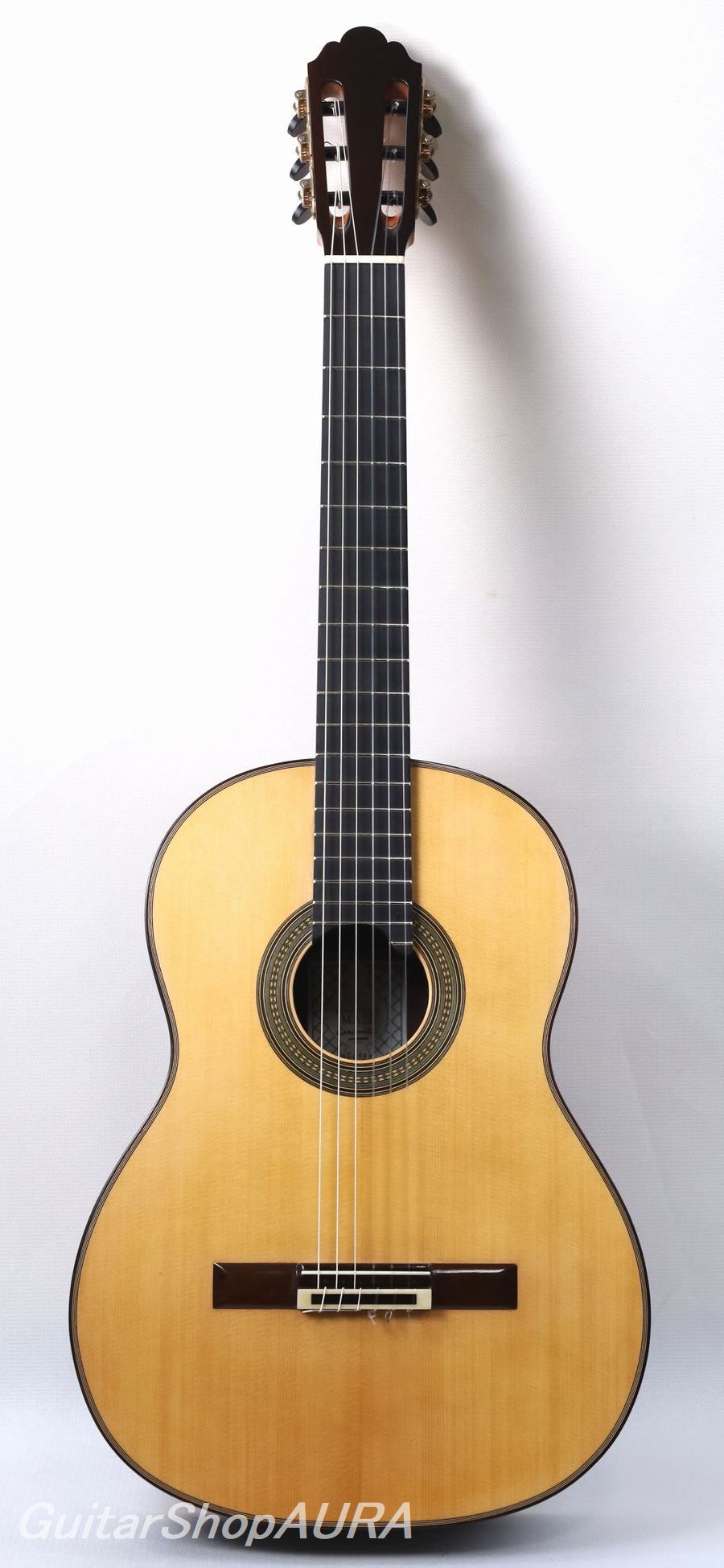
| Instrument | Jean-Pierre Maze |
| Category | Imported Classical Guitars 〔Used〕 |
| Number/Model | No.46 |
| Scale length | 650mm |
| Country | France |
| Year | 2019Year |
| Top | Spruce |
| Side&Back | Indian Rosewood |
| Condition※ | 8 |
| List price | INQUIRE |
| Price (tax included) | Please Inquire |
| option | HISCOX |
Click to enlarge the photos below
Neck:Cedro
Fingerboard:Ebony
Finish:top /Shellac back & sides Lacquer
Tuning Machine:SLOANE
String height:1string 2.8mm/6string 4.0mm
[Profile]
French maker. He was interested in guitars from a young age, but never made a living at it, and in 1976 he took a job at the Ministry of Finance in Paris. While working as a civil servant, he came to know Robert Bouchet (1898-1986), a master craftsman living in Montmartre at the time, in 1979, and began to learn guitar making directly from him.
He built his first guitar in 1983, but Bouchet encouraged him to remain an amateur and build guitars at his leisure, so he continued to build steadily at the rate of one per year while continuing to work as a civil servant.
His guitars became highly sought-after items by enthusiasts because of the high degree of perfection that one would not expect from an amateur maker and the small number of guitars he produced, especially since he was the only successor after Bouchet's death.
When Bouchet died in 1986, he finished Bouchet's unfinished last work, and Bouchet's widow gave him all the tools and wood that her husband had used before his death. He continued to work as a civil servant and produce one guitar a year, but retired a few years ago and now devotes himself to making guitars, producing three to four a year, and the demand for his work is particularly outstanding in Japan.
[Description]
We are pleased to announce the arrival of No. 46, made by Jean-Pierre Maze in 2019, with a spruce sound board and Indian rosewood back and sides, which has become his standard in recent years (until the early 2000s, the back and sides were made of Central and South American rosewood). Although the construction and acoustics are strongly influenced by Bouchet, he has deeply and flexibly absorbed its production philosophy while blending his own individuality without being too insistent, creating a characteristic that other Bouchet followers do not have.
The sound is hard and rigid, but unlike the German rigidity, it has the distinctive roundness and delicacy of the French style. The low to mid tones have a wildness that contrasts with the dignified delicacy of the high tones.
It is in very good condition, with no significant scratches, and has 20 frets. The bridge is double-holed, but can be wound normally.